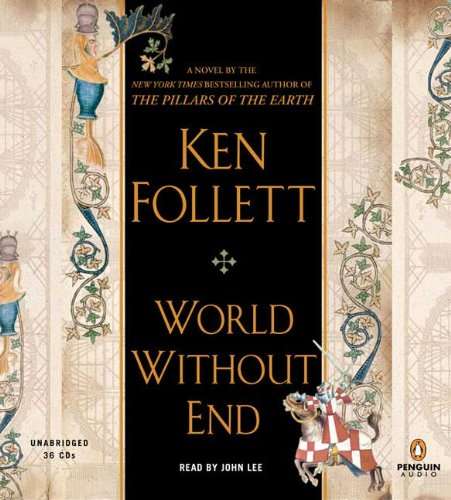
World Without End by Ken Follett - 36 CD's
Check my rate
| Main centres: | 1-3 business days |
| Regional areas: | 3-4 business days |
| Remote areas: | 3-5 business days |

| Main centres: | 1-3 business days |
| Regional areas: | 3-4 business days |
| Remote areas: | 3-5 business days |
Penguin Audio, 2007, 36 CD's, (45 1/2 hours audio), some minor wear to box, otherwise condition: as new.
In 1989, Ken Follett astonished the literary world with The Pillars of the Earth, a sweeping epic novel set in twelfth-century England centered on the building of a cathedral and many of the hundreds of lives it affected.
World Without End takes place in the same town of Kingsbridge, two centuries after the townspeople finished building the exquisite Gothic cathedral that was at the heart of The Pillars of the Earth. The cathedral and the priory are again at the center of a web of love and hate, greed and pride, ambition and revenge, but this sequel stands on its own. This time the men and women of an extraordinary cast of characters find themselves at a crossroads of new ideasabout medicine, commerce, architecture, and justice. In a world where proponents of the old ways fiercely battle those with progressive minds, the intrigue and tension quickly reach a boiling point against the devastating backdrop of the greatest natural disaster ever to strike the human racethe Black Death.
Heres a book that completely copies the first book in the series. Heres a book that follows the same sense of narrative progression, character development and resolution as it predecessor. It is one who's characters bear a striking resemblance to their ancestors in terms of individual personality and their place within the story; yet, for all the repetition, Follett churns out an equally as engrossing story as that of The Pillars of the Earth.
What have I to complain about? This is one of those rare occasions when more of the same isnt necessarily a bad thing. And the sense of familiarity also helped to solidify that this is actually the same location, Kingsbridge, just a few centuries later. Instead of focusing on building a new cathedral, after the dramatic burning down of the first one, the citizens are focusing on re-building the town bridge after the other was destroyed by a stampede of angry witch burners. And heres one of the things Follett does better this time round: he explores more social issues regarding femininity with greater depth.
In Pillars of the Earth he looked at injustices such as women being paid less for the same work and having to stay married to violent husbands. In the fourteenth century here he looks at the fear and hysteria that surrounded women with knowledge. If a woman had an idea or if she was moderately successful, it was a logical assumption that she must be a witch. Its unthinkable that she could have done such a thing based upon her own merits. And if this wasnt bad enough, men were always seen as right even when they were so clearly wrong.
The response to the Black Death that sweeps across Kingsbridge shows this. The monks have some very backwards ideas to medicine such as applying dung poultices to wounds and then wondering why they become infected. The sisters of the priory recognise the folly of this and argue for a more modern approach to treatment. The practicalities of their ideas are ignored simply because they are women: they must be wrong or witches. The men in the book are either suffocating brutes or paragons of kindness and decency. There seems to be no middle ground. The women though, they have many chances to prove themselves and rise above restrictions of the church and society.